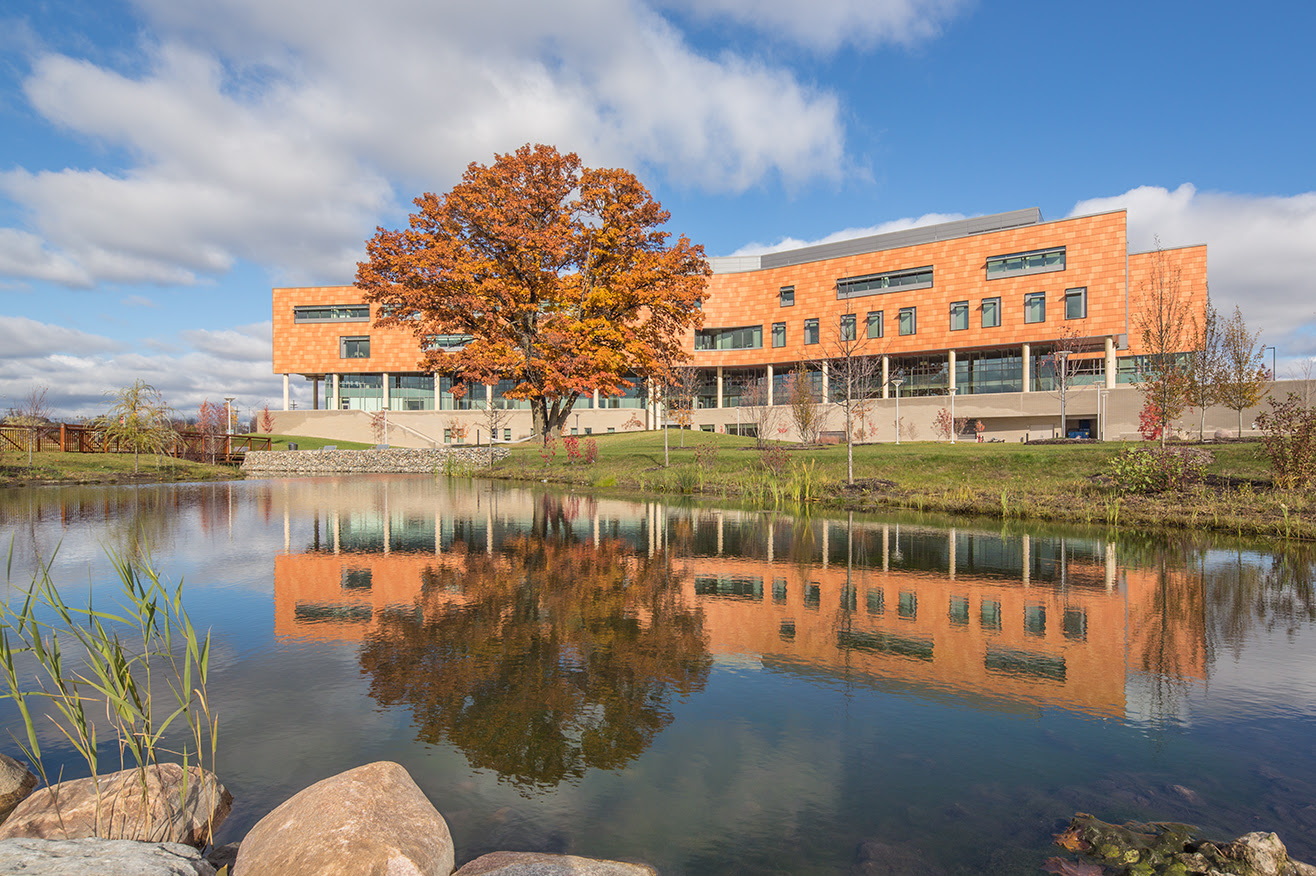SmithGroupJJR, a long-time leader of sustainable design, has reached the 100 LEED project milestone.
SmithGroupJJR recently achieved its 100th LEED certified project: the LEED-NC Platinum Oakland University Human Health Building, constructed in Rochester, Michigan. With the milestone, the 161-year-old architecture and engineering firm becomes one of just a handful of firms that has reached such heights in sustainable design.
Many of SmithGroupJJR’s diverse clients – which include some of the nation’s leading colleges and universities, research institutions, corporations and healthcare providers – are realizing that sustainable design not only provides energy savings but also leads to increased employee productivity and happier, healthier workers.
“Clients are proactively asking for sustainable design solutions,” says Greg Mella, FAIA, LEED AP BD+C, co-director of sustainable design at SmithGroupJJR. “What’s even more exciting is that they’re increasingly looking beyond LEED, aiming to create buildings that have the ability to produce all their energy on site. We believe that these buildings will become more and more common, and not just in the Sunbelt states, but across the U.S.” Mella added.
A Track Record of Firsts in Sustainable Design
SmithGroupJJR has long been committed to delivering sustainable solutions not only for its clients, but for the overall health of our planet. The firm’s green background is impressive: In 2001, its design of the headquarters for the Chesapeake Bay Foundation’s Philip Merrill Environmental Center in Annapolis, Maryland was the first to receive the top LEED rating of Platinum by the U.S. Green Building Council. Now, nearly 15 years later, SmithGroupJJR has designed another pacesetting project for the Chesapeake Bay Foundation: the Net-Zero Energy/Net Zero Water Brock Environmental Center, scheduled to complete construction this fall in Virginia Beach, Virginia.
While all SmithGroupJJR’s market sectors have embraced designing sustainability, one of the biggest growth industries for sustainable design is where you’d least expect it -- energy-consuming research laboratories. The SmithGroupJJR-designed Energy Systems Integration Facility for the U.S Department of Energy’s National Renewable Energy Laboratory (NREL), Golden, Colorado, was among the SmithGroupJJR projects earning LEED Platinum in 2014. It follows the firm’s design of NREL’S Science & Technology Facility, which in 2007 became the first federal government building to attain LEED Platinum status.
Another sustainability first for SmithGroupJJR was its design of the Christman Building, Lansing, Michigan, which became the world’s first project to garner quadruple LEED Platinum awards: one for its core-and-shell design, another for Commercial Interiors and two for Existing Building certification.
The Future of Sustainability
What’s next for sustainable design? Following the 2030 Challenge and its mandate that the building industry achieve net zero energy for every building designed by the year 2030, the industry is moving beyond designing buildings that do less harm and consume less resources to designing buildings that are truly generating all the energy they consume, or Net-Zero Energy. There is also a growing Material Transparency movement, which asks manufacturers to openly communicate the material ingredients of a product, so smart decisions can be made to avoid those ingredients known to be hazardous. Finally, early Conceptual Performance Modeling has revolutionized sustainable design with the evaluation of expected energy performance of a project early in the design process.









